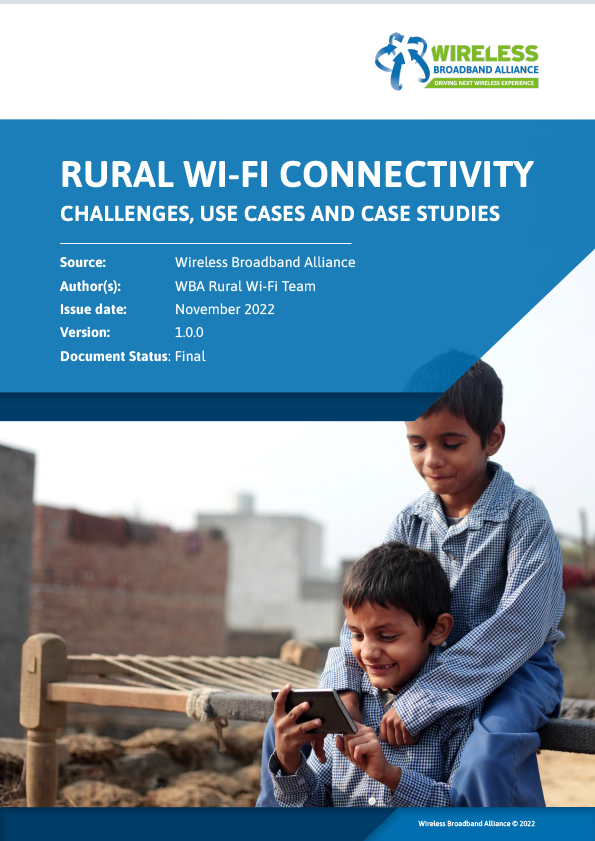
Over billion people worldwide live in rural communities where internet access is poor or completely unavailable. This severely limits their access to key digital services such as telehealth and online education, as well as job opportunities that involve telecommuting. This digital divide persists in both developed and developing countries and threatens to become “the new face of inequality,” according to UN Deputy Secretary-General Amina Mohammed. In September 2022, the Biden-Harris administration announced $502 million for High-Speed Internet in Rural Communities to help address the issue in the United States.
Wi-Fi is Essential to Bridge the Digital Divide in Rural Areas
There is a strong business case for the Wi-Fi industry to tap this marketplace and provide affordable internet access through Wi-Fi hotspots. Wi-Fi is considered as the most suitable technology to provide digital connectivity in rural areas. However, there are many factors specific to rural areas which must be considered when defining Rural Wi-Fi architecture and deployments if Wi-Fi is to be used as a robust, efficient, and affordable access technology in these areas.
In this Rural Wi-Fi Connectivity: Challenges, Use Cases and Case Studies, it demonstrates why Wi-Fi is the most economical and effective technology for bridging the digital divide in small towns, remote communities and other sparsely populated areas, utilising the best available backhaul solution.
The report also provides regulators with guidance for maximizing Wi-Fi’s ability to bridge the digital divide in rural areas. A prime example is ensuring that the new 6 GHz band is available for use in their countries, giving service providers additional spectrum to support more users and deliver the requisite speeds and performance.
We discuss the critical factors applicable to Wi-Fi networks in rural areas including:
- Broadband deployment challenges
- Relevant use cases
- Best practices in the ecosystem
- Importance of an unlicensed spectrum for Wi-Fi to connect the unconnected
- Real-world case studies, and
- Business models from different regions
This whitepaper is brought to you by:
This project is bought to you by the Rural Wi-Fi team led by the WBA Next Gen Work Group. In the next phase of this project, WBA will work on live trials based on the set of test cases under key deployment scenarios for optimal In-flight Wi-Fi connectivity.
To participate in future projects, contact WBA PMO. For additional publications, visit the WBA Resource Centre.










































